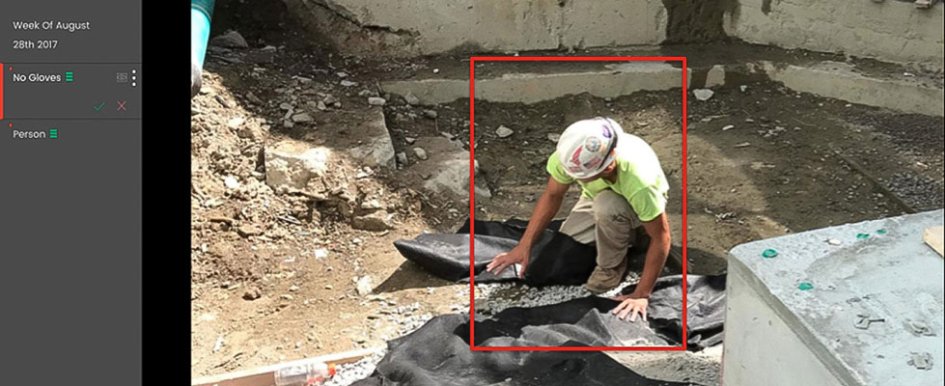
In the past, observations and checklists have been used to identify safety risks on project sites, but as artificial intelligence (AI) continues to be applied across various industries to improve efficiencies, it is also transforming how the construction industry approaches jobsite safety. Over the past couple of years, construction firms have leveraged AI to make the process of identifying and reporting safety risks faster and more streamlined. But what if the industry can move beyond training AI to observe risks? In the construction industry, there is now the capability to harness the power of big data to predict incidents before they occur—taking safety to the next level through predictive analytics.
Though it may sound futuristic, predictive analytics is not a new concept. Some of the top construction firms have been using AI to predict the future on the jobsite for years. In fact, in 2009, Google created predictive models to estimate the probability of certain employees leaving the firm. Similarly, IBM has developed a predictive attrition program that anticipates which employees are thinking of quitting and provides managers with advice on how to engage those employees.
Suffolk Construction, a firm headquartered in Boston, Massachusetts, whose mission is to “build smart,” understood the power of predictive analytics in other industries and wondered if it could also be applied to construction safety risk. It would form the next frontier of advancement for the company’s existing safety technology—RiskX, a cloud-based mobile safety-observation app that allows Suffolk to collect data in real time and promote safe behavior.
Workers who know their safety practices are being observed by others significantly improve their adherence to safety policy without a decrease in productivity. By collecting jobsite observations, all Suffolk employees, from engineers to executives, are able to make calculated and informed safety decisions.
The positive results from RiskX’s observation capabilities were immediate. From the 65,000 observations collected since the 2017 launch, Suffolk lowered its recordable incidents rate by 28% and its lost-time incident rate by 35%.
With such positive results from RiskX, Suffolk was eager to develop new advancements that could push the boundaries of existing safety technology beyond mere observation. The company wanted to enhance the observation data with image analyses and use the different data types in an algorithm that could predict risks before they happened. The crucial question was: If project teams were able to be alerted of risks ahead of time, how many more jobsite incidents could possibly be avoided?
To answer this question, Suffolk needed a technology partner that had the advanced capabilities to shift from observing risk to actually predicting it. After a careful selection process, Suffolk launched a research project with Boston, Massachusetts-based AI startup Smartvid.io, called “Vinnie Predictive Analytics.” This project was based around an AI engine nicknamed “Vinnie,” which had been trained to recognize construction risks in photos.
Suffolk supplied Smartvid.io with 10 years of project photos, data and images pulled from construction management systems, and worked with them to build a predictive model.
During the development process, Vinnie’s AI technology looked at each picture and identified potential on-site safety risks, such as a worker’s lack of proper personal protective equipment (PPE). Vinnie supplemented the information extracted from images with other data, such as the project’s type, location and weather, as predictors. Recorded safety incidents over the last 10 years were used as outcome parameters to train the AI, with some reserved for testing the accuracy of the prediction.
Early testing of the Vinnie Predictive Model produced encouraging results. The model was run against project data, photos and incidents that it had not encountered before. It predicted 20% of all incidents within the sample with an 80% accuracy rate. So, even if just one in four incidents are avoided with predictive analytics technology, at around $20,000 to $30,000 estimated cost per incident, cost savings could easily enter millions. And, more importantly, jobsite employees at risk for an incident have the ability to potentially avoid it.
With this model, Suffolk gained the ability to use image recognition to monitor risks. Within the next year, the company looks forward to implementing the Vinnie Predictive Model, helping to not only observe risk, but to also predict and mitigate it. The industry still has much room for learning how to improve and deploy predictive analytics in the construction industry, but the new technology available is promising. As data volumes grow and AI engines become more refined, predictive models could play a crucial role in mitigating risks on construction sites.
Beyond safety, predictive analytics can be applied to other risk types, such as schedule, quality or cost. While predicting the future will never be perfect, this technology can better manage risk and deliver projects better, faster and cheaper, but most importantly, safer.
Big data and AI are influencing and shaping the business world around us, and it’s important for construction firms to explore how they can best leverage emerging technology to improve the construction process. By capitalizing on new technologies like predictive analytics, construction companies can help the industry become safer than ever.
